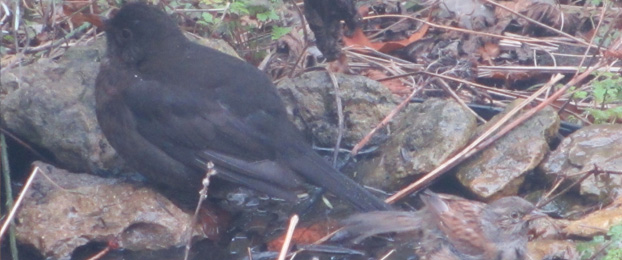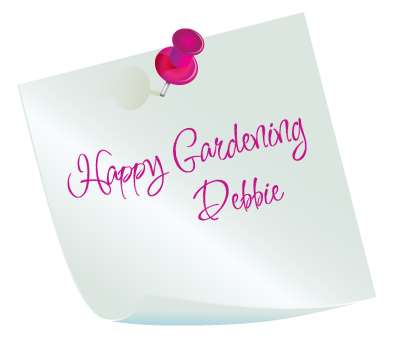Wildlife in the Winter Garden
December 6, 2016 4:42 pm Leave your thoughtsI’ve been fortunate enough to spend a few days in Dubai recently. The night time temperatures never dipped below 20ºC. Returning home to sub zero temperatures and frosty mornings was quite a shock to the system. I realised that winter had most definitely arrived!
I suddenly felt the need to wrap up warm and started craving some wholesome, warming, comfort food.
These issues are easy enough for me to solve but winter poses some real challenges for the wildlife in our gardens.
Why it’s so important to look after Wildlife in the Winter Garden?
Creatures need shelter from severe weather otherwise they could die of exposure. They need food but their usual sources could be depleted or frozen. They need water to drink and bath which may also be frozen.
What can you do to help?
Top of my Christmas list every year is Bird Food and homes for little critters.
You can see where my priorities lie.
Don’t deprive a Dunnock of its Dinner:
Gardening for wildlife needn’t be difficult. Little changes mean a lot. The old idea of putting the garden to bed for the winter isn’t necessarily beneficial to our wild garden companions. Leave the beds for the bugs!
Simply not being too tidy in your borders can encouraged invertebrates which in turn are food for other creatures. Birds like Dunnocks like to feed on the ground and eat insects which may be hiding in leaf litter. Clear away the debris and you could be removing homes for these little critters. These in turn are a valuable, natural food source for other creatures. Blackbirds can often be heard rather than seen, rooting about in the leaves at the bottom of a hedge looking for their next meal.
Windfall apples left on the ground also provides creatures with a tasty treat.
Leave stems standing in borders; these also provide insects with hibernating sites and in some cases seeds for birds.
They also look really cool with frost on!
Images courtesy of Jon Brocklebank at Barnsdale Gardens Worth a visit even in the winter.
Shelter for Wildlife in the Winter Garden
Natural Shelter:
Shelter, nest sites and feeding grounds for a variety of wildlife, can all be provided with a good choice of trees, hedges and shrubs, particularly thorny ones and with piles of logs and leaves.
For some plant suggestions see my blog on ‘Hedges for Hogs’
Supplementary Shelter:
Purpose built boxes for nesting , roosting or hibernating can be purchased or made quite simply for birds, bugs, mammals and amphibians, in fact, ‘All Creatures Great and Small.’
Birds have been known to use bird boxes to shelter in bad weather. Come January they’ll be looking for nest sites, so make sure it’s clean.

This is a sociable terrace but you could have ….
A desirable detached residence.
 This is my resident robin’s home
This is my resident robin’s home
Invite beneficial insect to stay the winter with a bug house.
Hopefully many creatures will be sleeping by now. If you’ve provided them with accommodation then they’ll be tucked up tight until spring. Don’t be too tidy around sheds and out buildings. Who knows who might be hiding out in there? You may have ladybirds, butterflies and beetles hibernating amongst your barrows, buckets and brooms.
I found a hedgehog in the bottom of a box of rose food once!
The simplest of bug houses can be made from dried stems tied in bundles and tucked into sheltered shrubs, perhaps against a wall. Don’t place them in a wind tunnel though. No one wants to live in a wind tunnel!
Here are a couple of small dwellings for tiny critters to hold up during the colder months.
The smaller stems will also provide nesting sites for solitary bees during the summer. If these bug houses are intended for solitary bees to breed in they will need to be managed to prevent pests and diseases but I’ll leave that for another time.
Or go all out and make them a full hotel. There’s a great project for one here www.wildaboutgardens.org.uk
Food for Wildlife in the Winter Garden
Natures Bounty or Grow your own bird food!
Natural food comes in many forms; nectar from flowers feeds insects, some of which are in turn, food to birds, bats and other creatures. Seeds and berries can be grown in our borders. Seeds can also be provided with other supplementary foods, on bird tables and feeders in the winter.
The Plants
Ivy is essential to late flying insects before they go into hibernation.
Although they are poisonous to humans, Helleborus (Lenten/Christmas Rose) are a valuable food source for early flying insects.
This humble snowdrop also seems to be attracting insects as will other early flowering bulbs.
Seeds producers:
Teasels, Lavender, Fennel, Sunflowers, Valarian officinalis and Eryngiums or any thistle type plant may produce seeds attractive to birds.
One year I cut some ripe sunflower heads and hung them on my fence but you could just leave them standing in the borders.
I also leave my Fennel heads but this does risk self seeding and being overrun with it.
Berries:
Pictured above is Mahonia (Oregon Grape) which has highly fragrant, yellow flowers in winter followed by black berries.
Pictured above are Berberis berries and below are the berries of Sorbus (Rowan Trees)
There are plenty more berry ideas in my blog on ‘Hedges for Hogs’
Many climbers produce seed or berries. For example some Clematis produce seed and Honeysuckle, Ivy and Rambling Roses produce berries.
Many plants which produce seeds and berries for the birds also have flowers that are valuable for insects.
Supplementary Food:
 Feed the birds, tuppence a bag
Feed the birds, tuppence a bag  (that was 1964, bit more expensive than that nowadays!)
(that was 1964, bit more expensive than that nowadays!)
Joking aside it’s not a cheap business to feed the birds these days but it is so important, particularly during winter. I believe it’s money well spent as it can provide a lifeline at a time when natural food sources may be difficult to access due to the weather. Much of their food may have gone to ground until spring. Birds can’t get worms out of frozen ground! Berries may also be running low because of competition from migrant birds.
A high fat diet is essential to fight the cold and see them through the winter.
There are plenty of food stuffs available to feed the birds in your garden. You may choose to feed peanuts, suet, sunflower hearts, or other seeds.
Try to have a variety of feeders and food types. These will cater for not only large quantities but also many different species of birds. I’ve found that a number of smaller feeders work better than one large one. It gives small birds the chance to get a look in. Much better than fighting for your food which uses up valuable energy and fat resources.
Feed regularly and in the same location so the birds don’t have to go hunting for their food.
For more on what and how to feed the birds this winter, you’ll find some excellent advice here www.vinehousefarm.co.uk
Water for Wildlife in the Winter Garden
Water
A reliable, safe, clean, accessible source of water is essential in a wildlife garden for drinking and bathing. It is even more important in extreme weather such as during droughts and freezing weather. Once located, wildlife will return time and time again. Cleverly placed, it can also provide hours of free entertainment. Something as simple as a large, plastic, plant saucer will suffice. You could provide a simple bird bath or make a dustbin lid pond.
If you have a wildlife pond, keep it ice free to prevent the build up of toxic gasses which are harmful to water life.
These two were sharing a bath in February in one of my dustbin lid ponds.
Mr. Frog here was sheltering under the stones in one of my dustbin lid ponds in December.
Will you be creating a haven for wildlife in your garden this winter?
Perhaps you’d like some help to design a garden With Wildlife in Mind. For some inspiration why not treat yourself to a personal Evaluation of your garden or book an inspirational talk for your local group.
Please do keep in touch but until we meet again……….
Happy Gardening



















